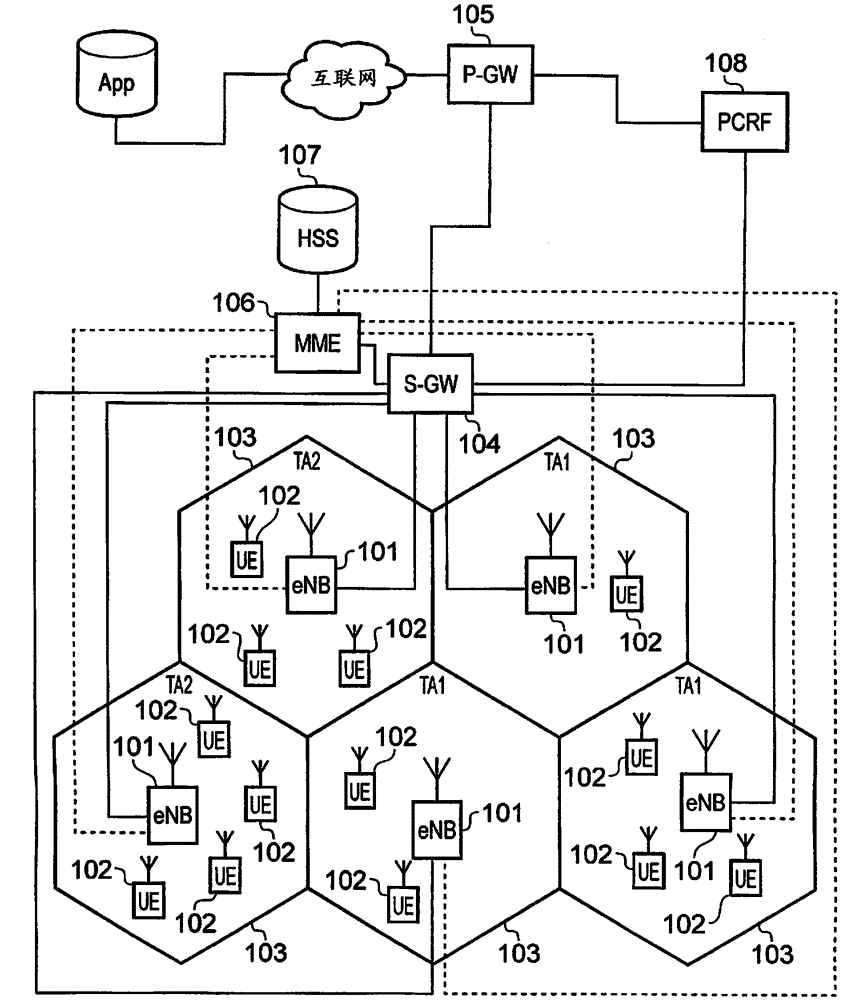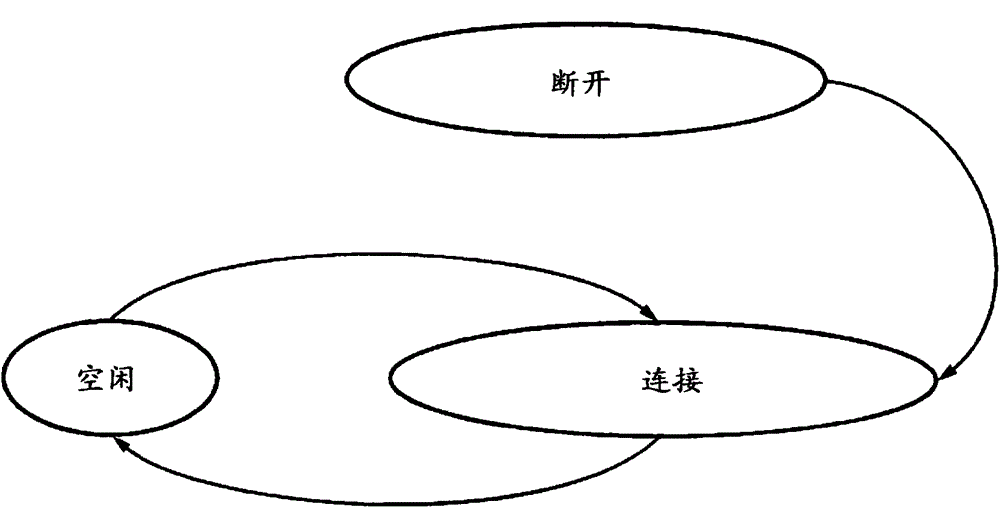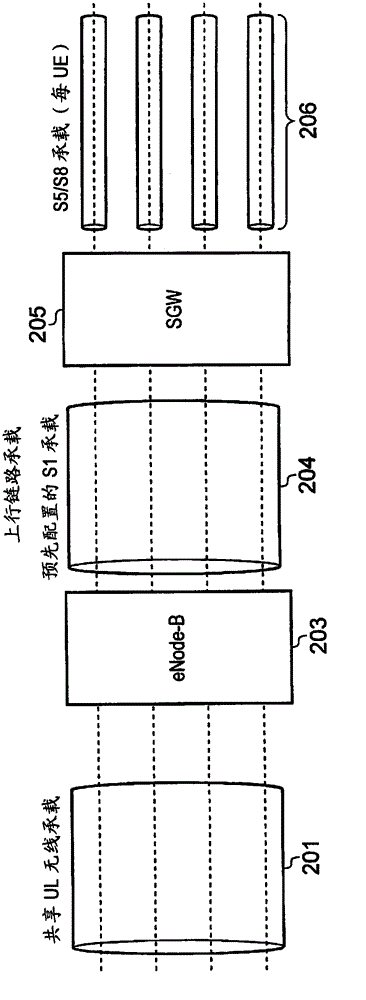Mobile communications network and method
A mobile communication network and mobile communication device technology, applied in wireless communication, network traffic/resource management, connection management, etc., can solve problems such as consumption, insignificant data volume, and consumption of wireless resources
- Summary
- Abstract
- Description
- Claims
- Application Information
AI Technical Summary
Problems solved by technology
Method used
Image
Examples
example 1
[0073] Figure 7 A schematic diagram illustrating a downlink data transmission process according to an example of the present technology is provided. Such as Figure 7 As shown in , when the S-GW receives downlink small packet data from the P-GW for transmission to the receiving mobile communication device, the S-GW sends a paging request to the MME.
[0074] The paging request includes an indication of a UESCID identifying the recipient mobile communication device. As explained above, when a mobile communication device initially registers with the network, the MME assigns the UESCID and tracks the location of the mobile communication device. When the MME receives the paging request from the S-GW, the MME determines the tracking area / tracking areas where the receiving mobile communication device is located. Next, the MME sends a paging command to all eNBs within the identified tracking area. Each of these eNBs then transmits a small packet data paging message. The small p...
example 2
[0079] Contrary to conventional LTE downlink data transmission where each mobile communication device is assigned a dedicated downlink radio bearer, in this shared downlink bearer example 1 all downlink small packet data transmitted within the cell is allocated to each A mobile communication device receives and decodes (at least to the MAC layer). This is advantageous because it is simple to implement. However, a Tracking Area typically includes tens of eNBs, therefore the total number of mobile communication devices in a given Tracking Area may be quite high, possibly exceeding several hundred mobile communication devices. Thus, even though each mobile communication device only receives small packets of data relatively infrequently, a single mobile communication device may be required to power on at very frequent intervals to receive and decode downlink data. This may lead to excessive power consumption of each mobile communication device. now refer to Figure 8 A second e...
PUM
 Login to View More
Login to View More Abstract
Description
Claims
Application Information
 Login to View More
Login to View More - R&D
- Intellectual Property
- Life Sciences
- Materials
- Tech Scout
- Unparalleled Data Quality
- Higher Quality Content
- 60% Fewer Hallucinations
Browse by: Latest US Patents, China's latest patents, Technical Efficacy Thesaurus, Application Domain, Technology Topic, Popular Technical Reports.
© 2025 PatSnap. All rights reserved.Legal|Privacy policy|Modern Slavery Act Transparency Statement|Sitemap|About US| Contact US: help@patsnap.com



